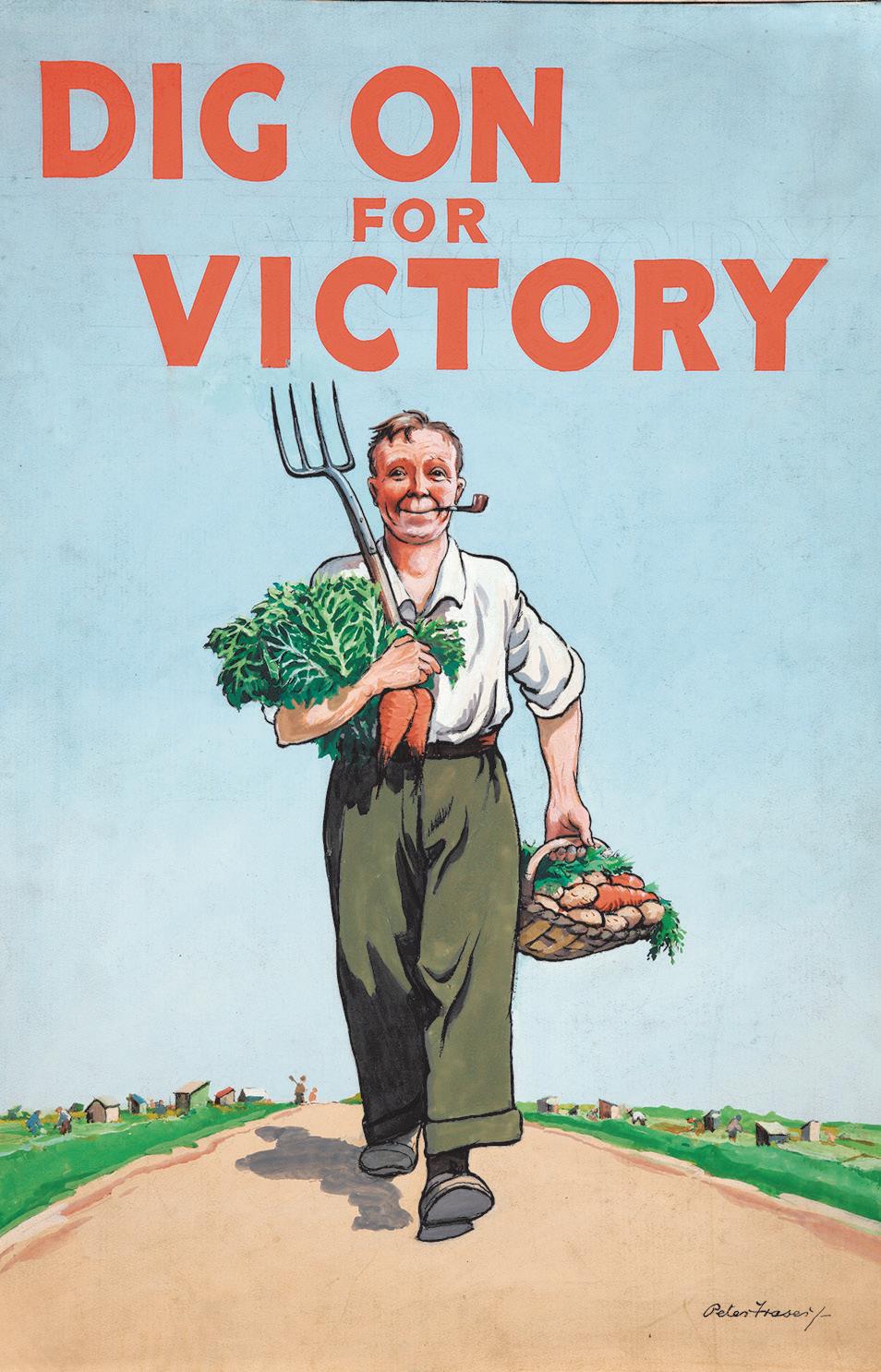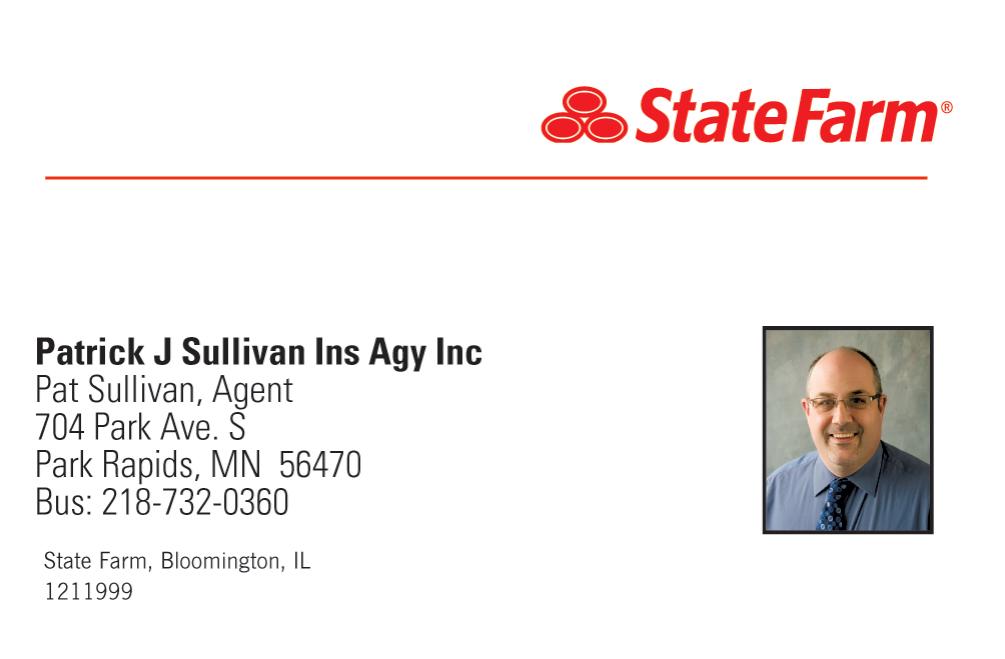
5 minute read
Victory gardens are back
Victory Gardens are back! Today’s version is all about self-reliance, growing your own food
Are you familiar with old-time Victory Gardens, and have you heard they’re coming back?
Let’s begin by playing the game “Tell us some thing about you that most people don’t know,” and I’ll go first.
You probably know that I’m a native North Dako tan, but did you know my dad was born in Philadelphia and moved while young to neighboring New Jersey, which became his parents’ lifelong home?
When I was young, our family took road trips every few years to visit our grandparents in New Jersey, which is officially known as The Garden State. As a young boy, I was especially impressed with the watermelons Grandpa Kinzler grew in his garden, and I still have memories of their flavor. Roadside stands were everywhere, heaped with fresh fruits and vegetables for sale, hoping to attract city dwell ers driving to New Jersey’s ocean beaches for the weekend.
I remember Grandma Kinzler telling us about the Victory Gardens their family grew during World War I when they resided in the heart of Philadelphia, and again at their New Jersey home during World War II. Planting a Victory Garden made people feel like they were helping to win the war, especially when their family members were overseas on the battlefront.
Victory Gardens have an interesting history. During World War I, food production fell drastically worldwide while food prices soared, and in 1917 the U.S. National War Garden Commission launched a campaign to promote what were termed “war gar dens.” Also nicknamed “Victory Gardens,” they were promoted on all available private and public lands, and over 5 million gardens were started, growing vegetables and fruits that exceeded $1.2 billion by the war’s end.
In World War II, as food rationing began, the U.S. Department of Agriculture encouraged the planting of Victory Gardens, emphasizing to urban and rural residents that their gardens would help to lower the price of vegetables needed by the War Department to feed the troops. Almost 40% of the vegetables produced during the war years came from these gar dens, located in home yards and public spaces.
By 1943, there were 12 million Victory Gardens in cities and 6 million on farms. Even Eleanor Roosevelt planted a garden on the White House lawn.
The government not only encouraged people to plant Victory Gardens to supplement the food sup ply, but also to boost morale. Gardeners could feel empowered, knowing their contribution was helping the war effort. Victory Gardens became a part of daily life on the homefront and even helped unite commu nities, as neighbors shared gardening information and experiences.
And now, Victory Gardens are back, once again becoming popular. But this time, the goal is different.
The new Victory Garden is about self-reliance. It’s about growing your own food so you have control over how it is grown and how much you pay.
Today’s gardens are considered victories for healthy eating, wellness, teaching children about fresh food and promoting a sustainable lifestyle. It offers a family increased food security.
Like war gardens, today’s Victory Gardens are being planted wher ever space is available, including front yards, apartment balconies, school grounds and raised beds.
UNITS: 6’x10’, 10’x15’, 12’x20’ Loading & Unloading Service. Proudly serving Park Rapids & Detroit Lakes area for over 42 years. Park Rapids 218-732-4815 | Detroit Lakes 218-847-3090 IRCC# 37962 D L I MOVING & MINI STORAGE Park Rapids Office 618 1st St. E., Park Rapids Tuesdays 10 am - 3 pm, other times by appt. BRIAN HILLESLAND, NBC-HIS National Board Certified Hearing Instrument Specialist Toll - Free 1-800-631-4946 218-631-4966
Growing Together
BY DON KINZLER Columnist
How to have a Victory Garden
A Victory Garden is a concept. It’s a way of thinking about gardening: a philosophy that works in gardens of all sizes.
Today’s Victory Garden emphasizes soil health by incorporating organic materials, including com post, manure and peat moss. Keep soil covered with mulches to encourage soil microbes and conserve moisture. Use pesticides judiciously only after try Wikimedia Commons An American World War II-era poster promoting Victory Gardens.
N e w T r a n s i t i o n a l C a r e U n i t

Green Pine Acres Skilled Nursing Facility Long Term Care & Short Term Stay Rehabilitation Woodside Manor Assisted Living Assisted Living with Services Green Pine Acres Adult Day Services
You can count on Greenwood Connections to provide only the highest quality of care for yourself or your loved one

ing other control methods.
When planting a Victory Garden, focus on foods your family eats and enjoys and types you’d like to store, preserve, can or freeze for winter eating. Where space permits, plant fruits like raspberries, strawberries, rhubarb, apples and plums.
If new to gardening, study, ask questions, dig in, attend classes and remember that experience is a great teacher. Today’s Victory Gardens share an important quality with the gardens of a centu ry ago: they unite us as we share our experiences and knowledge. Don Kinzler, a lifelong gardener, is the horticulturist with North Dakota State University Extension for Cass County. Readers can reach him at kinzlerd@casscountynd.gov or call 701-241-5707. Wikimedia Commons A British poster by Peter Fraser from the World War II era.

LOOKING FOR HEALTH INSURANCE? We Have What You’re Looking For!
Quality, Trusted Companies and Plans. Experienced, Knowledgeable Agent. Hands on Personal Service Right Here When You Need Us
We Care About What Matters To You - Let Me Help You Find A Plan That’s Right For Your Budget:

Medicare Plans • Medicare Rx (Part D) MnSure and Individual/Family Coverage Short Term Plans • Group Plans for Employers Kathy Anderson, Agent Guiding the insurance needs of customers like you since 1951 AVENSON Insurance Agency 732-7217 • 1-800-726-3758 217 - 2nd Street West, Park Rapids






